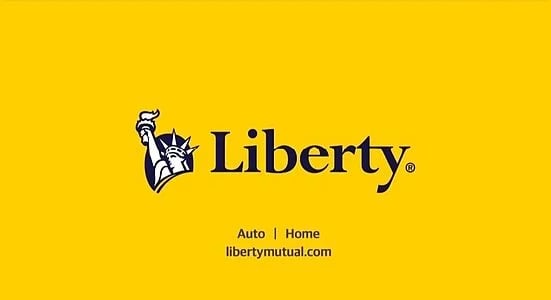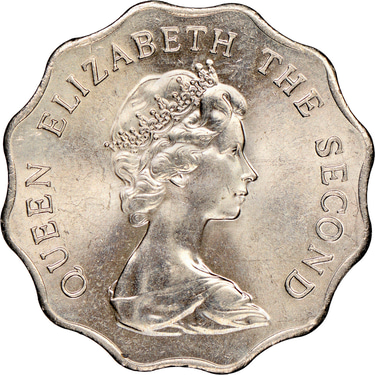Use Desktop for Better Experience
Liberty Mutual Holding Company Inc. Surveillance Report
For Credit Rating
FINANCIALSELECTED
Ryan Cheng
10/8/202516 min read
Credit Profile Overview
The credit profile of Liberty Mutual Holding Company Inc. (Liberty Mutual or the Company) is supported by its dominant market position as a leading global property and casualty (P&C) insurer, a highly diversified business platform, substantial recent improvements in underwriting profitability, robust capitalization, and a conservative investment strategy. These strengths are balanced by the Company's inherent exposure to earnings volatility from catastrophe events, execution risk associated with ongoing strategic initiatives, and persistent competitive pressures across its key markets.
Key strengths supporting the credit profile include its dominant market position and diversification, a substantial improvement in underwriting profitability, robust capitalization and financial flexibility, and a conservative and liquid investment portfolio. These are balanced by challenges and offsetting factors such as an inherent exposure to catastrophe volatility, execution risk on strategic initiatives, competitive pressures in personal and commercial lines, and an evolving ESG landscape that presents reputational risk.
Rating Summary
Liberty Mutual’s credit profile is fundamentally underpinned by its excellent market position as a top-tier global P&C insurer, its highly diversified business platform spanning multiple product lines and geographies, and a significant, positive inflection in underwriting profitability following a period of strategic repositioning. The Company’s scale, ranking as the ninth-largest global P&C insurer based on 2024 gross written premium and 91st on the Fortune 100 list, provides significant competitive advantages. This is complemented by a robust capital base, strong internal capital generation, and a liquid, high-quality investment portfolio.
The Company’s successful execution of its strategic plan is evidenced by the dramatic turnaround in financial performance, with net income attributable to Liberty Mutual Holding Company Inc. (LMHC) surging to $4.383 billion in 2024 from $213 million in 2023. This strong performance continued into the first half of 2025, with net income attributable to LMHC of $2.870 billion reported for the six months ended June 30, 2025. This improvement was driven by a marked enhancement in underwriting results, reflecting a clear management focus on profitability over top-line growth. These strengths are balanced by the inherent earnings volatility from the Company’s exposure to natural catastrophes and the ongoing execution risks associated with its portfolio optimization and expense discipline initiatives.
Financial Strength Ratings
Liberty Mutual's financial strength is consistently recognized by the major independent rating agencies, reflecting its very strong balance sheet, diversified business profile, and improved operating performance. The ratings for the core operating insurance companies are strong, with a distinction made for the ratings of the ultimate holding company.
A.M. Best assigns a Financial Strength Rating (FSR) of 'A' (Excellent) with a stable outlook, noting that companies with this rating have an excellent ability to meet ongoing policyholder obligations. The agency assesses Liberty Mutual's balance sheet strength as "very strong" and affirms the Long-Term Issuer Credit Rating for the holding company, LMHC, at "bbb" (Good).
Moody's Investors Service assigns an 'A2' (Good) financial security rating with a stable outlook. Moody's has also assigned a 'Baa2' rating to senior unsecured notes issued by the holding company, Liberty Mutual Group Inc..
S&P Global Ratings provides an 'A' (Strong) financial strength rating with a stable outlook for the core operating companies. The agency revised its outlook from negative to stable in late 2023, citing the company's increased capital buffer under a revised capital model. S&P assigns a 'BBB' issuer credit rating to the holding company.
Fitch Ratings maintains an 'A-' Insurer Financial Strength Rating on Liberty Mutual and its operating subsidiaries.


Key Credit Considerations
Dominant Market Position and Broad Diversification
Liberty Mutual commands a formidable competitive position, anchored by its significant scale and extensive diversification. The Company is the fifth-largest P&C writer in the United States, with a 4.1% market share based on 2024 direct premiums written. Its market leadership extends across key business segments, providing a balanced and resilient portfolio. In 2024, the Company ranked third in Commercial Lines with a 4.0% market share, fourth in Homeowners insurance with a 6.1% share, seventh in Private Passenger Auto with a 3.3% share, and seventh in Workers' Compensation with a 3.2% share.
This diversification across both personal and commercial lines is a core credit strength. The business is organized into two primary units: US Retail Markets (USRM), which serves individuals and small businesses, and Global Risk Solutions (GRS), which provides a comprehensive suite of commercial, specialty, and reinsurance products globally. This structure, combined with a global footprint spanning 28 countries and economies, provides significant resilience against localized market downturns, adverse regulatory changes, or specific product-line challenges. The breadth of its operations allows Liberty Mutual to allocate capital to areas with the most attractive risk-adjusted returns and to weather volatility in any single market.
Substantial Improvement in Underwriting Profitability
A key positive driver of the credit profile is the substantial and demonstrable improvement in Liberty Mutual’s underwriting profitability. The Company’s consolidated combined ratio improved dramatically to 95.9% for the full year 2024 from 102.7% in 2023, marking a return to underwriting profitability. This positive trend accelerated into 2025, with the combined ratio for the second quarter improving by 12.4 percentage points year-over-year to an excellent 87.2%.
This turnaround is not a result of favorable market conditions alone but reflects the successful execution of a deliberate corporate strategy. CEO Tim Sweeney has attributed this success to "disciplined underwriting," "operational efficiencies," and "strategic choices made over the past two years," underscoring a fundamental shift in the Company's risk appetite and expense management. A direct consequence of this strategic pivot has been a calculated reduction in premium volume in certain segments. Consolidated Net Written Premiums (NWP) declined by 3.3% in 2024, driven primarily by a 5.3% reduction in the US Retail Markets segment, where the most significant underwriting actions were implemented. This concurrent decline in NWP and sharp improvement in the combined ratio is not a contradictory signal but a clear cause-and-effect relationship. Management has prioritized underwriting margin over market share, deliberately shedding less profitable business to strengthen core earnings power. This "shrink to grow profitably" approach is indicative of a mature and disciplined management team focused on creating sustainable, long-term value.
Robust Capitalization and Financial Flexibility
Liberty Mutual’s balance sheet strength is robust and has improved significantly. Total equity increased by a substantial 22.3% year-over-year to $30.652 billion at year-end 2024, enhancing the Company's capacity to absorb large losses and support its strategic objectives. This growth in the capital base was fueled by a powerful shift toward self-sustaining, organic capital generation.
The Company’s improved operational performance is now actively and substantially adding to its capital base, creating a virtuous cycle. Stronger profits lead to more retained capital, which in turn provides greater flexibility to write more profitable business and withstand market volatility. This is evidenced by the surge in cash flow from operations, which increased by an impressive 82.2% to $6.469 billion in 2024 from $3.550 billion in 2023. This strong internal capital generation reduces reliance on external capital markets and provides ample financial flexibility to fund growth and manage unexpected losses.
Conservative and Liquid Investment Portfolio
The Company’s investment strategy is conservative and serves as a stable source of earnings and liquidity. As of June 30, 2024, total investments stood at $94.3 billion, with the vast majority allocated to high-quality fixed maturities ($69.8 billion). The portfolio is further supported by a significant position in cash and cash equivalents, which amounted to $11.1 billion on the same date. This composition ensures a high degree of liquidity to meet policyholder obligations.
The investment function is managed by a dedicated group, Liberty Mutual Investments (LMI), which oversees more than $100 billion in assets across public and private markets. LMI's stated mission is to "create capital" for the parent company, aligning the investment strategy with the core objectives of the insurance operations. While a detailed breakdown of the consolidated portfolio by NAIC rating is not publicly available, statutory filings for its U.S. P&C entities show a heavy concentration in NAIC 1 (highest quality) and NAIC 2 (high quality) designated bonds, which is indicative of the group's conservative investment philosophy.
Offsetting Factors and Inherent Risks
Despite these strengths, Liberty Mutual's credit profile is constrained by several inherent risks. The Company's global and diversified book of business exposes it to significant catastrophe risk, which introduces inherent volatility to earnings and capital. Catastrophe losses were a material drag on earnings in recent years, amounting to $3.89 billion in 2024 and a more severe $4.68 billion in 2023. While reinsurance is used to mitigate the ultimate financial impact, the frequency and severity of these events remain a key variable in the Company's financial performance.
Furthermore, the ongoing strategic initiatives, while successful to date, carry execution risk. The Company must demonstrate that the recent improvements in underwriting performance are sustainable across different phases of the market cycle. Achieving its publicly stated target of a 95% combined ratio on a consistent basis will be a key validation of the strategy's long-term success. The strategic pruning of its portfolio, particularly in personal lines, could also cede market share to aggressive competitors like State Farm and Progressive in the short term, potentially impacting its long-term competitive positioning if not managed carefully. Finally, the P&C insurance market remains intensely competitive, with pressures on pricing and policy terms in both personal and commercial lines.
Balance Sheet Management
Quality of Capital and Underwriting Leverage
Liberty Mutual maintains a high-quality capital structure, characterized by a substantial and growing base of policyholders' surplus (total equity) and moderate underwriting leverage. The Company's capital position has strengthened considerably. Total equity was $27.8 billion in 2022 and $25.1 billion at year-end 2023, before increasing significantly to $30.7 billion at year-end 2024, a rise of over 22% in the last year alone. This recent growth was driven primarily by strong net income, reflecting robust organic capital generation. Total consolidated assets have also grown, standing at $156.0 billion in 2022, $165.2 billion in 2023, and $166.7 billion at the end of 2024. Over the same period, total liabilities were $128.2 billion in 2022, $140.1 billion in 2023, and $136.0 billion in 2024.
Underwriting leverage, a key measure of risk tolerance, remains prudent. The ratio of net written premiums to total equity was 1.73x in 2022 and 1.85x in 2023, before improving to approximately 1.47x at year-end 2024. This moderate level for a large, well-diversified insurer indicates that the Company's capital base is more than sufficient to support its current premium volume. Financial leverage is also manageable, with long-term debt of $8.9 billion as of June 30, 2024, down from $9.6 billion at the end of 2023, which is well-supported by the Company's earnings and capital base.


Asset Quality and Investment Risk
Liberty Mutual’s investment portfolio is characterized by high credit quality, strong liquidity, and prudent risk management. The portfolio is managed by the dedicated Liberty Mutual Investments (LMI) group, which employs a sophisticated and professional approach to asset management aligned with the liability profile of the insurance operations.
As of June 30, 2024, the portfolio was dominated by fixed maturity securities ($69.8 billion) and cash and cash equivalents ($11.1 billion), which together accounted for approximately 86% of total investments and cash. This conservative allocation provides a stable stream of investment income and ensures ample liquidity. The remainder of the portfolio includes strategic allocations to mortgage loans ($3.2 billion), equity securities ($1.2 billion), and other investments ($19.7 billion), which offer potential for higher returns. The credit quality of the bond portfolio is very high. Based on statutory filings for the U.S. P&C operations for 2022, the vast majority of fixed income holdings were designated in the top two NAIC categories (NAIC 1 and NAIC 2), indicating minimal exposure to below-investment-grade credit risk.
The Company’s liquidity position is excellent. Primary sources of liquidity include the large portfolio of cash and highly marketable fixed-income securities, as well as strong and consistent operating cash flow. In 2024, cash flow from operations was a robust $6.5 billion, providing more than sufficient cash to meet claim payments and operating expenses without the need to sell long-term investments under pressure.
The ALM strategy is appropriate for a P&C insurer. The relatively short-tail nature of most of its P&C liabilities is matched by a correspondingly liquid and shorter-duration asset portfolio. This approach mitigates the risk of having to liquidate assets at a loss to pay claims and minimizes interest rate risk on the balance sheet.
Liquidity and Asset/Liability Management (ALM)




Operating Fundamentals
Drivers of Profitability
Liberty Mutual’s earnings are driven by two primary sources: underwriting operations and investment results. Following a period of underperformance, underwriting has re-emerged as a significant driver of profitability. The company posted a net underwriting gain of $1.996 billion in 2024, a sharp reversal from underwriting losses of $1.299 billion in 2023 and $966 million in 2022. The primary factor behind this turnaround was a significant improvement in the loss and loss adjustment expense (LAE) ratio, which fell to 57.9% in 2024 from 65.3% in 2023 and 66.9% in 2022. The expense ratio also showed modest improvement, declining to 27.6% in 2024 from 28.1% in 2023 and 28.4% in 2022.
Net investment income provides a stable and substantial contribution to pre-tax earnings, amounting to $3.563 billion in 2024, compared to $2.092 billion in 2023 and $4.414 billion in 2022. This consistent income stream helps to offset the inherent volatility of the underwriting cycle. The combination of improved underwriting and steady investment income led to a pre-tax operating income of $5.924 billion in 2024, a significant increase from $711 million in 2023 and $1.299 billion in 2022. Consequently, net income attributable to LMHC reached $4.383 billion in 2024, up from $213 million in 2023 and $414 million in 2022.
Consistency and Quality of Earnings
While profitability in 2024 and 2025 has been strong, the consistency of earnings over a longer period has been affected by catastrophe losses and the strategic repositioning of the business. The total combined ratio was 102.0% in 2022 and 102.7% in 2023, reflecting the underwriting losses recorded in those years, before improving markedly to a profitable 95.9% in 2024. However, the quality of recent earnings is high, as it is driven by fundamental improvements in core underwriting performance.
A key indicator of this improvement is the underlying combined ratio, which excludes the impact of catastrophes and prior-year reserve development. The underlying combined ratio showed steady improvement, from 95.3% in 2022 to 93.4% in 2023, and then significantly to 85.5% in 2024. Further improvement was seen in the first half of 2025, with the underlying combined ratio improving by 4.2 points to 82.0% compared to the same period in 2024. This demonstrates a marked enhancement in the profitability of the Company’s current-year business. While catastrophe losses will continue to introduce a degree of volatility—adding 8.6 points to the 2024 combined ratio—the stronger underlying performance provides a much larger buffer to absorb these events while remaining profitable overall.
Earnings Diversification: Product/Geography
Liberty Mutual’s earnings are well-diversified, which enhances their stability and quality. The Company generates significant premium volume from both its US Retail Markets ($28.3 billion NWP in 2024) and its Global Risk Solutions ($16.4 billion NWP in 2024) segments. These segments have different risk profiles, market dynamics, and profitability drivers. For example, USRM is more exposed to high-frequency personal lines claims and U.S. weather events, while GRS is exposed to lower-frequency, higher-severity commercial and specialty risks on a global basis. This balance helps to smooth overall results.
The Company’s extensive geographic diversification further supports earnings stability. With operations in 28 countries across the Americas, Europe, and Asia Pacific, Liberty Mutual is not overly reliant on the economic or insurance market conditions of any single country. This global spread allows it to capitalize on growth opportunities worldwide and mitigates the impact of regional downturns or concentrated catastrophic events.
Company Profile and Risk Management
Management Profile and Strategy
Liberty Mutual is led by an experienced executive team, headed by CEO Tim Sweeney. The management team has articulated and is executing a clear and consistent corporate strategy centered on improving profitability and creating long-term value. The core tenets of this strategy include a disciplined focus on achieving a sustainable 95% combined ratio target, enhancing operational efficiency to manage expenses, optimizing the global portfolio by reallocating capital to the most profitable segments, and strategic brand consolidation, as evidenced by the decision to retire the Safeco brand and unify marketing efforts. This strategic clarity has been instrumental in the Company's recent performance turnaround.
Market Position and Distribution
Liberty Mutual’s strong market position is supported by a sophisticated and highly effective multi-channel distribution network. This "omni-channel" approach is a significant and durable competitive advantage that is difficult for peers to replicate. It allows the Company to efficiently access diverse market segments and to pivot its strategy as market conditions evolve.
The network includes:
(1) Independent Agents - A vast network of independent agents is utilized to distribute personal lines (auto, home) and small business insurance, providing broad market reach and local expertise.
(2) Wholesale Channel - The Company accesses the excess and surplus (E&S) market through its subsidiary, Ironshore, which works with wholesale brokers to place unique, hard-to-place specialty risks.
(3) Global Brokers - For large, complex commercial and specialty risks, Liberty Mutual partners with a global network of brokers to deliver tailored solutions to multinational clients.
This diversified distribution structure is a strategic asset, not merely a sales function. It provides deep market intelligence from multiple sources and enables the precise execution of underwriting strategy. For example, the Company can implement stricter underwriting criteria in its personal auto business distributed through one channel while simultaneously pursuing growth in specialty commercial lines through another. This flexibility enhances enterprise-wide resilience and adaptability.
Enterprise Risk Management (ERM)
Risk management is a core competency and an institutional strength for Liberty Mutual. The Company’s ERM framework is comprehensive and deeply embedded in its governance and operations. The ERM function has been consistently recognized as one of the top programs among North American insurers by rating agencies and regulators.
Enterprise risk governance begins at the highest level, with the Board of Directors providing oversight for the entire framework. The Board is responsible for monitoring the management of risk and the implementation of company policies to mitigate those risks. The ERM function itself is responsible for a holistic and continuous process of anticipating, identifying, measuring, and mitigating the full spectrum of risks facing the enterprise, including underwriting, market, credit, operational, and strategic risks. This proactive approach is also extended to clients through extensive risk control services, including online safety resources, a dedicated Risk Control Consulting Center, and an industrial hygiene lab, all designed to help policyholders prevent losses.
Reinsurance Program
Given its significant exposure to natural catastrophes and large commercial risks, Liberty Mutual’s reinsurance program is a critical component of its risk management strategy. The Company actively utilizes both treaty and facultative reinsurance to manage earnings volatility, protect its capital base from the financial impact of severe events, and optimize its underwriting capacity. Financial statements for reinsurance subsidiaries, such as Liberty Re (Bermuda) Limited, confirm the active use of retrocession and other reinsurance structures to manage the group's net exposures. A robust and well-designed reinsurance program is essential to maintaining the Company’s financial strength and stability.
For 2025, Liberty Mutual successfully renewed its property catastrophe reinsurance program. The main North American occurrence program provides coverage up to $6.0 billion, with the company's U.S. per-event retention remaining at $1.0 billion. The company also maintains a North American aggregate catastrophe cover, which provides up to $500 million in protection for events exceeding a $100 million deductible, once an aggregate retention of $750 million is met.


Environmental, Social, and Governance (ESG) Considerations
Liberty Mutual has established a formal ESG framework to guide its strategy and operations. The Company’s stated ESG ambition is to "Advance resilience and inclusive growth," a goal that is integrated into its corporate purpose. This ambition is operationalized through four strategic pillars: (1) increasing customer resilience, (2) enabling sustainable growth, (3) improving lives and communities, and (4) advancing Diversity, Equity & Inclusion (DEI).
ESG governance is integrated at the highest levels of the organization. The Board of Directors oversees the development and implementation of the enterprise-wide business strategy, which includes the management of ESG-related risks and opportunities. This top-down approach is designed to ensure that ESG considerations are embedded in decision-making processes across all business units.
Environmental
On environmental issues, Liberty Mutual has publicly stated its commitment to supporting a transition to a low-carbon economy. The Company has set a target to reduce its Scope 1 and 2 global greenhouse gas (GHG) emissions by 50% from 2019 levels by 2030. It also demonstrates a commitment to climate-related financial disclosure through its annual publication of a report aligned with the Task Force on Climate-Related Financial Disclosures (TCFD) framework, with the 2024 report published in April 2025. The company also released its comprehensive 2024 Purpose & Impact Report in July 2025, detailing its progress on sustainability initiatives.
However, there appears to be a notable gap between the Company’s high-level ambitions and the specific, actionable policies demanded by certain external stakeholders. This discrepancy creates a potential reputational and transition risk that could impact the brand and its access to capital over the long term. While Liberty Mutual has articulated a goal to "facilitate the transition to a low-carbon economy," analysis from organizations such as the Rainforest Action Network (RAN) criticizes the Company for a perceived lack of concrete, near-term commitments. Specifically, these critiques point to the absence of an explicit policy to immediately cease underwriting new fossil fuel expansion projects and the lack of a more aggressive phase-out plan for underwriting and investment in coal, tar sands, and other carbon-intensive sectors. As capital markets, regulators, and reinsurance partners place increasing emphasis on tangible climate action, insurers perceived as lagging may face heightened scrutiny. This tension between stated goals and stakeholder expectations represents a material, forward-looking risk factor that requires ongoing monitoring.


Social
The Company’s social initiatives are focused on its key stakeholders: employees, customers, and the community. Liberty Mutual has programs in place to advance DEI, promote employee development and well-being, and engage in corporate philanthropy. As an insurer, its core social function includes providing products that enhance financial security, ensuring fair and prompt claims handling, and protecting customer data and privacy.
Liberty Mutual’s corporate governance structure is a credit strength. The holding company is overseen by a Board of Directors composed of experienced and largely independent members who provide credible oversight of management and strategy. The Company operates under a formal Code of Business Ethics and Conduct, and its strong ERM function helps to instill a robust risk culture throughout the organization. The mutual holding company structure, while limiting access to public equity markets, aligns the interests of the Company with its policyholders over the long term.
Governance




References
Company Profile | LMG
https://www.libertymutualgroup.com/about-lm/investor-relations/our-company/company-profile
Facts + Statistics: Insurance company rankings | III
https://www.iii.org/fact-statistic/facts-statistics-insurance-company-rankings
Investor Relations at Liberty Specialty Markets
https://www.libertyspecialtymarkets.com/investor-relations
Liberty Mutual sets two-decade record with financial results – dumps Safeco brand
Liberty Mutual Insurance Reports Fourth Quarter and Full Year 2024 Results
Liberty Mutual fact sheet
https://www.libertymutualgroup.com/documents/q2-2024-fact-sheet1.pdf
Our global operations - Liberty Mutual Business Insurance
https://business.libertymutual.com/our-global-operations/
Liberty Mutual Holding Company Inc. Second Quarter 2024
https://www.libertymutualgroup.com/documents/q2-2024-financial-statements1.pdf
Liberty Mutual Investments: Homepage
https://www.libertymutualinvestments.com/
Who We Are | Liberty Mutual Investments
https://www.libertymutualinvestments.com/who-we-are
COMBINED ANNUAL STATEMENT TO THE ... - Liberty Mutual
9 Liberty Mutual Statistics (2025): Revenue, Market Share, Fortune 500
https://taptwicedigital.com/blog/liberty-mutual-stats
Liberty Mutual - Wikipedia
https://en.wikipedia.org/wiki/Liberty_Mutual
Liberty Mutual Insurance Reports Fourth Quarter and Full Year 2023 Results - PR Newswire
Liberty Mutual Insurance Reports Fourth Quarter and Full Year 2022 Results
Liberty Mutual Insurance Executive Team | Comparably
https://www.comparably.com/companies/liberty-mutual/executive-team
Wholesale and Distribution Insurance | Liberty Mutual
https://www.libertymutual.com/small-business/wholesale
Excess and surplus - Liberty Mutual Business Insurance
https://business.libertymutual.com/commercial-solutions/excess-and-surplus/
Wholesale-distribution - Liberty Mutual Business Insurance


